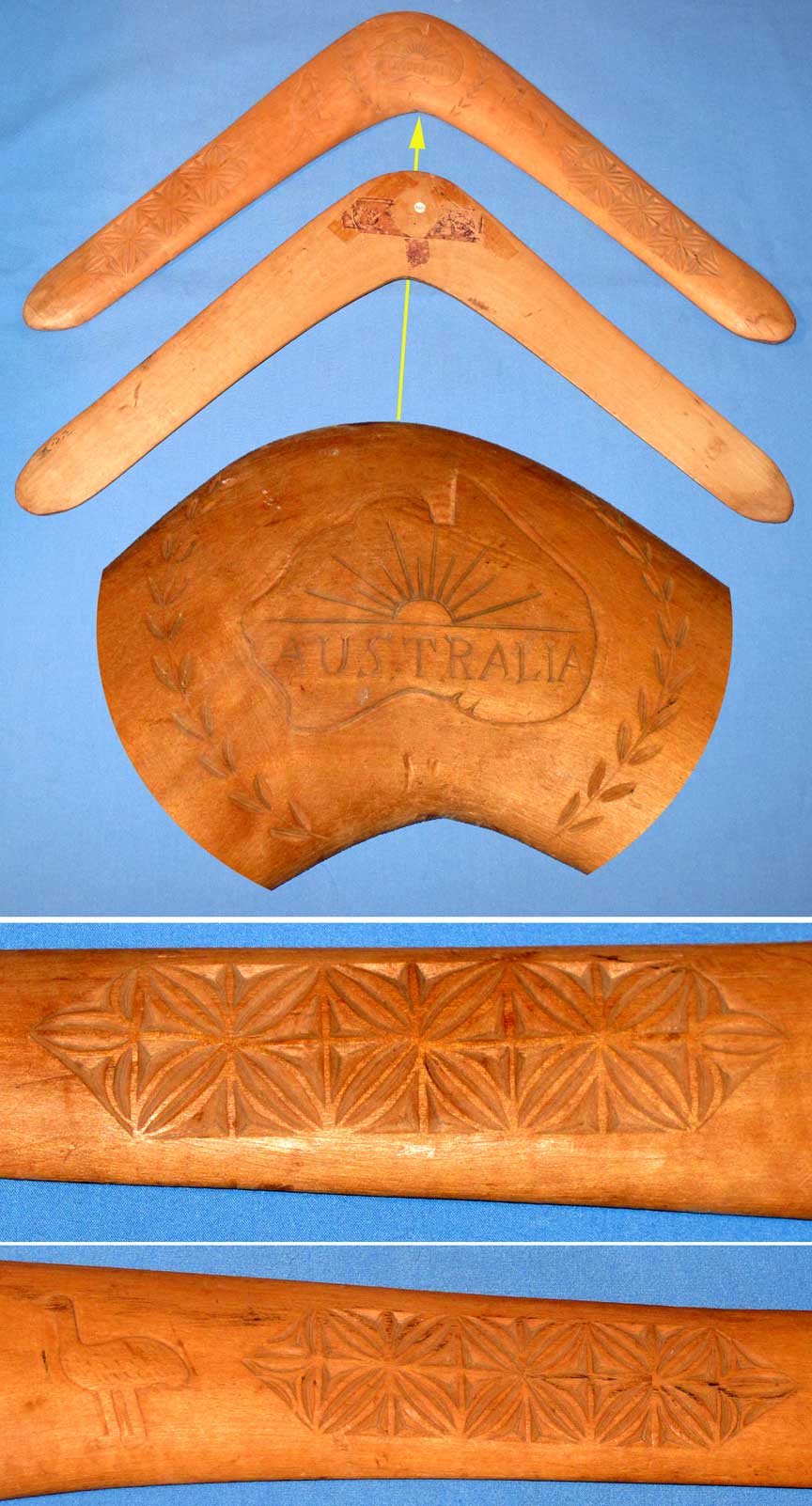Item N82
This Item was Sold on 5 July 2012
for $62
Similar artifacts for sale are often found on the Aboriginal
Boomerangs web page.
Historical Pricing information for this item and similar artifacts can be found at: Historical Artifact Prices.
|
This returning style Australian Aboriginal boomerang was made in the early 1940s out of Acacia. I acquired it from an elderly woman who served as a nurse in Northern Australia during World War II and she brought two boomerangs home with her at the end of the war. This boomerang is properly made out of a natural elbow with the grain running through the elbow and along the length of the blades. The elbow has an embossed map of Australia with a rising sun and the word " Australia " in the map. There is an embossed kangaroo and emu adjacent to the map. The blades have incised floral panel decorations. The elbow and airfoiling is exceptional and the art is very nice, but the origin of the art is not Aboriginal. It is too perfect and it resembles the laser art on the better tourist pieces, but there were no lasers in the early 1940s. It is probably not a great returner, but it is properly made and it is probably capable of a return flight if thrown carefully. It would be better to display this boomerang, on the wall. There is no damage, but there is a mark from a mounting card on the reverse elbow. Span = 51 cm ; Weight = 206 gm Australian Aborigines are well known for making boomerangs. The majority of the Aborigines had the technology to make throwsticks, or non-returning boomerangs. Only a small percentage of the tribal groups knew how to make true returners and most of these came from the eastern coastal regions of Queensland, New South Wales and Victoria. During the past century, the majority of the Aborigines came out of the bush and were somewhat assimilated into the European man's culture. Many Aborigines began making returning style boomerangs to sell to tourists. The earliest ones were well made out of natural timber and with the grain following the curvature of the boomerang. Today, most hardwood boomerang are cut out of a large board and the grain is usually straight and running parallel to a line spanning the tips of the blades. Boomerangs that are made with the grain following the contour of the blades are much stronger and more valuable. In addition, some boomerangs have good airfoiling. The majority do not. Most "tourist boomerangs" have painted upper surfaces that display Australian animals and decorative lines and/or geometric patterns. Most pre-contact returners have no artwork or the artwork is simple and scratched into the surface. It is easy to tell the tourist boomerang from the valuable ethnographic artifact. However, tourist boomerangs that are made properly with the grain running along the contour and with good airfoiling and art work do have good collectable value, especially if they are made by a famous Aboriginal artists like Bill Onus or Joe Timbery. |

How to Order | Back to: Aboriginal Boomerangs | Collectable Artifacts | Historical Artifact Prices | contact: Ted Bailey